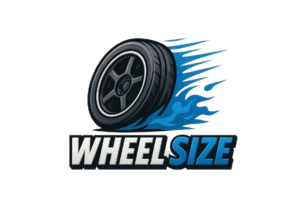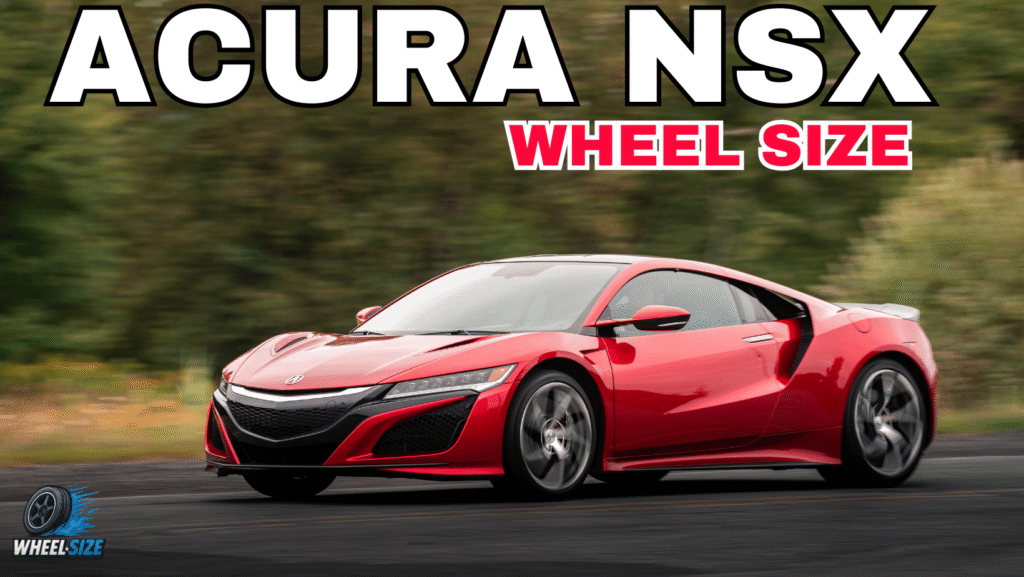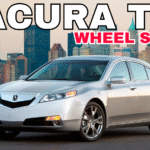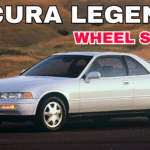The Acura NSX is a classic example of performance, balance, and precise engineering. The NSX has always needed careful wheel fitment to stay ahead on the road and track, from its first appearance in the early ’90s to the hybrid evolution in the 2010s. It’s not just about how the wheels look when you drive a first-gen NA1 or the newest NC1 Type S. You also need to make sure that the car’s handling, ride quality, and overall balance are all perfect. This guide covers everything from offsets to bolt patterns, so you can make smart choices no matter which NSX you have.
Understanding Wheel Fitment Basics
Before looking at specific NSX models, it’s vital to know the basics of how wheels fit. The bolt pattern is the number of lug holes and the size of the circle they make. For instance, 5×114.3 signifies that there are five lugs spaced out on a circle with a diameter of 114.3 mm. The next thing to think about is the size of the rim, which is the wheel’s diameter and width. Then there’s the offset, which tells you how far the wheel is inside or outside the fender. A lower offset moves the wheel out, whereas a larger offset moves it in. The hub bore is the hole in the middle of the wheel that fits over the hub of your car. Lastly, the size of the tire must be right for the wheel and the way you plan to use the car, whether it be for performance, daily use, or display. Knowing these dimensions will help you keep your handling sharp, your tires wear evenly, and your wheels don’t rub.
Read About: Acura TL Wheel Fitment Guide
Acura NSX I (NA1/NA2) [1991–2001] Wheel Fitment
The original Acura NSX (NA1/NA2) is a work of art in lightweight engineering, and the fit of the wheels is very important for retaining the balance of the mid-engine. The bolt pattern on these versions is 5×114.3, and the hub bore is 70.1 mm. The factory rims were different sizes, with 15×6.5 or 16×7 in front and 16×8 or 17×8.5 in back. The OEM offsets were between +53 mm and +57 mm, which made for a tight fit that kept the handling the same.
The early NA1 cars usually used 205/50R15 front tires and 225/50R16 rear tires. Later models switched to 215/45R16 front tires and 245/40R17 rear tires. A lot of owners use aftermarket wheels; however, sticking to these requirements makes sure the suspension geometry is right and stops rubbing problems. The NSX chassis rewards accuracy, so even little adjustments in width or offset can make a big difference in how the car performs. When making alterations, always think about how much space there is between the brakes and the ride height.
| Year | Center Bore | Bolt Pattern | Lug Nut Thread | Torque (Nm) | OEM Tire Size | OEM Rim Size | OEM Offset Range (mm) | Tire Pressure (Front / Rear, bar) | Aftermarket Wheel Size Range |
| 1991 | 70.1 mm / 64.1 mm | 5×114.3 / 5×114.3 | M12 x 1.5 | 110 | 205/50ZR15 89W / 225/50ZR16 91W | 6.5Jx15 ET55 / 8Jx16 ET60 | 53–57 | 2.3 / 2.8 | 15″–17″ |
| 1992 | 70.1 mm / 64.1 mm | 5×114.3 / 5×114.3 | M12 x 1.5 | 110 | 205/50ZR15 89W / 225/50ZR16 91W | 6.5Jx15 ET55 / 8Jx16 ET60 | 53–57 | 2.3 / 2.8 | 15″–17″ |
| 1993 | 70.1 mm / 64.1 mm | 5×114.3 / 5×114.3 | M12 x 1.5 | 110 | 205/50ZR15 89W / 225/50ZR16 91W | 6.5Jx15 ET55 / 8Jx16 ET60 | 53–57 | 2.3 / 2.8 | 15″–17″ |
| 1994 | 70.1 mm / 64.1 mm | 5×114.3 / 5×114.3 | M12 x 1.5 | 110 | 205/45ZR16 87W / 245/45ZR16 94W | 7Jx16 ET55 / 8Jx16 ET60 | 53–57 | 2.3 / 2.8 | 16″–17″ |
| 1995 | 70.1 mm / 64.1 mm | 5×114.3 / 5×114.3 | M12 x 1.5 | 110 | 215/45ZR16 86W / 245/40ZR17 91W | 7Jx16 ET55 / 8.5Jx17 ET60 | 53–57 | 2.3 / 2.8 | 16″–17″ |
| 1996 | 70.1 mm / 64.1 mm | 5×114.3 / 5×114.3 | M12 x 1.5 | 110 | 215/45ZR16 86W / 245/40ZR17 91W | 7Jx16 ET55 / 8.5Jx17 ET60 | 53–57 | 2.3 / 2.8 | 16″–17″ |
| 1997 | 70.1 mm / 64.1 mm | 5×114.3 / 5×114.3 | M12 x 1.5 | 110 | 215/45ZR16 86W / 245/40ZR17 91W | 7Jx16 ET55 / 8.5Jx17 ET60 | 53–57 | 2.3 / 2.8 | 16″–17″ |
| 1998 | 70.1 mm / 64.1 mm | 5×114.3 / 5×114.3 | M12 x 1.5 | 110 | 215/45ZR16 86W / 245/40ZR17 91W | 7Jx16 ET55 / 8.5Jx17 ET60 | 53–57 | 2.3 / 2.8 | 16″–17″ |
| 1999 | 70.1 mm / 64.1 mm | 5×114.3 / 5×114.3 | M12 x 1.5 | 110 | 215/45ZR16 86W / 245/40ZR17 91W | 7Jx16 ET55 / 8.5Jx17 ET60 | 53–57 | 2.3 / 2.8 | 16″–17″ |
| 2000 | 70.1 mm / 64.1 mm | 5×114.3 / 5×114.3 | M12 x 1.5 | 110 | 215/45ZR16 86W / 245/40ZR17 91W | 7Jx16 ET55 / 8.5Jx17 ET60 | 53–57 | 2.3 / 2.8 | 16″–17″ |
| 2001 | 70.1 mm / 64.1 mm | 5×114.3 / 5×114.3 | M12 x 1.5 | 110 | 215/45ZR16 86W / 245/40ZR17 91W | 7Jx16 ET55 / 8.5Jx17 ET60 | 53–57 | 2.3 / 2.8 | 16″–17″ |
Aftermarket Wheel Fitment Tips for NA1/NA2
When you buy new wheels for your NA1 or NA2 NSX, try to find a good mix between style and performance. You can put on front wheels that are 17″ or 18″ wide and rear wheels that are 18″ or 19″ wide without making any changes, as long as the offsets are between +35 and +45 mm. To avoid having to use hub-centric rings, keep the hub bore at 70.1 mm.
For the best handling, choose staggered tire sets, like 215/40R17 in the front and 265/35R18 in the back. Don’t go too far with widths or offsets unless you’re rolling fenders or changing the suspension. Also, make sure the new wheels don’t hit your calipers, especially if you’ve added a huge brake kit. It’s usually a good idea to evaluate fit before putting something together.
Acura NSX I (NA1/NA2) Facelift [2002–2005] Wheel Fitment
The facelifted NSX (2002–2005) had fixed HID headlights and bigger factory wheels, giving it a new look. The stock rim diameters were changed to 17×7 in the front and 17×9 in the back, but the 5×114.3 bolt pattern and 70.1 mm hub bore stayed the same. Offsets stayed at about +53 mm, which kept the NSX’s precise handling.
The tire sizes also changed to fit the new wheels with this update. The usual sizes are now 215/40R17 in the front and 255/40R17 in the back. This arrangement gave the car better traction and made it look more current on the road without changing the balance that NSX owners adore.
The chassis stayed basically the same as in previous years, but the facelifted version has a little less space between the wheels and the body, so you need to be careful when choosing an aggressive offset or huge tire. Stay close to original specs unless you’re ready to roll fenders or change the height of your ride. The 2002+ NSX may look more aggressive, but it nevertheless follows the same precise rules as the older models.
| Year | Center Bore | Bolt Pattern | Lug Nut Thread | Torque (Nm) | OEM Tire Size | OEM Rim Size | OEM Offset Range (mm) | Tire Pressure (Front / Rear, bar) | Aftermarket Wheel Size Range |
| 2002 | 70.1 mm / 64.1 mm | 5×114.3 / 5×114.3 | M12 x 1.5 | 110 | 215/40ZR17 83Y / 255/40ZR17 94Y | 7Jx17 ET55 / 9Jx17 ET55 | 53–57 | 2.3 / 2.8 | 17″–18″ |
| 2003 | 70.1 mm / 64.1 mm | 5×114.3 / 5×114.3 | M12 x 1.5 | 110 | 215/40ZR17 83Y / 255/40ZR17 94Y | 7Jx17 ET55 / 9Jx17 ET55 | 53–57 | 2.3 / 2.8 | 17″–18″ |
| 2004 | 70.1 mm / 64.1 mm | 5×114.3 / 5×114.3 | M12 x 1.5 | 110 | 215/40ZR17 83Y / 255/40ZR17 94Y | 7Jx17 ET55 / 9Jx17 ET55 | 53–57 | 2.3 / 2.8 | 17″–18″ |
| 2005 | 70.1 mm / 64.1 mm | 5×114.3 / 5×114.3 | M12 x 1.5 | 110 | 215/40ZR17 83Y / 255/40ZR17 94Y | 7Jx17 ET55 / 9Jx17 ET55 | 53–57 | 2.3 / 2.8 | 17″–18″ |
Flush Fitment Recommendations
If you want a flush, aggressive look that doesn’t hurt performance, go for 17×8 front wheels with a +40 mm offset and 18×10 rear wheels with a +35 mm offset. This combination fills out the wheel wells well while yet being able to drive. For a clean stance, use 215/40R17 and 275/35R18 tires with it.
Check the brake clearance, especially in the front. The new NSX had bigger brakes, so not all aftermarket wheels would fit without spacers. Also, make sure that the new wheels still have a 70.1 mm hub bore or use good hub-centric rings.
Acura NSX II (NC1) [2016–2023] Wheel Fitment
The second-generation Acura NSX (NC1) is a whole other animal. It has twin-turbo V6 engine, electric torque, and all-wheel drive. The original wheels are substantially bigger: 19×8.5 in the front and 20×11 in the back, both made of forged aluminum. The bolt pattern is 5×120, and the hub bore is 70.1 mm. For the SH-AWD system, the offsets are +53 mm in the front and +57 mm in the back.
The OEM tire sizes are 245/35ZR19 in the front and 305/30ZR20 in the back, which gives this NSX amazing grip right away. Maintaining the right rolling diameter between the front and rear tires is very important since the drivetrain is electronically tuned. Changing this can make the SH-AWD system confused, which can cause warnings or make handling worse.
When you upgrade the wheels, choose lightweight forged ones to keep the NSX’s crisp handling and reduce the unsprung mass. Aftermarket setups usually have 20″ in the front and 21″ in the back, but the offsets have to stay low. This generation doesn’t give much opportunity for mistakes in fitment.
| Year | Center Bore | Bolt Pattern | Lug Nut Thread | OEM Tire | OEM Rim | Offset | Tire Pressure | Aftermarket Wheel Size Range |
| 2016 | 70.1 mm | 5×120 | M14 x 1.5 | 245/35ZR19 93Y / 305/30ZR20 103Y | 8.5Jx19 ET55 / 11Jx20 ET55 | 53–57 | 2.2 / 2.2 | 19″–20″ |
| 2017 | 70.1 mm | 5×120 | M14 x 1.5 | 245/35ZR19 93W / 295/30R20 97V | 8.5Jx19 ET55 / 11Jx20 ET55 | 53–57 | 2.2 / 2.2 | 19″–20″ |
| 2018 | 70.1 mm | 5×120 | M14 x 1.5 | 245/35ZR19 93W / 305/30ZR20 103W | 8.5Jx19 ET55 / 11Jx20 ET55 | 53–57 | 2.2 / 2.2 | 19″–20″ |
| 2019 | 70.1 mm | 5×120 | M14 x 1.5 | 245/35ZR19 93W / 305/30ZR20 103W | 8.5Jx19 ET55 / 11Jx20 ET55 | 53–57 | 2.2 / 2.2 | 19″–20″ |
| 2020 | 70.1 mm | 5×120 | M14 x 1.5 | 245/35ZR19 93W / 305/30ZR20 103W | 8.5Jx19 ET55 / 11Jx20 ET55 | 53–57 | 2.2 / 2.2 | 19″–20″ |
| 2021 | 70.1 mm | 5×120 | M14 x 1.5 | 245/35ZR19 93W / 305/30ZR20 103W | 8.5Jx19 ET55 / 11Jx20 ET55 | 53–57 | 2.2 / 2.2 | 19″–20″ |
| 2022 | 70.1 mm | 5×120 | M14 x 1.5 | 245/35ZR19 93W / 305/30ZR20 103W | 8.5Jx19 ET55 / 11Jx20 ET55 | 53–57 | 2.2 / 2.2 | 19″–20″ |
Performance Fitment Considerations for NC1
If you want to make your NC1 better for the street or the track, use 20×9 front wheels (+45 offset) and 21×12 rear wheels (+35 offset) as a performance standard. These sizes let you use 255/30ZR20 front tires and 325/25ZR21 rear tires, which improve traction without messing up the drivetrain.
Check the space between the brakes every time, especially with the optional carbon-ceramic rotors. Because the NSX’s torque might put stress on lower-quality wheels, make sure you use wheels that meet or exceed OEM strength requirements. Lastly, don’t stretch the tires or put too much camber on the car if you want it to drive as good as it looks.
Acura NSX Wheel Fitment Table (All Generations)
| Generation | Years | Bolt Pattern | Rim Size (F/R) | Offset (F/R) | Hub Bore | Tire Size (F/R) |
| NA1/NA2 | 1991-2001 | 5×114.3 | 15×6.5 / 16×8 to 17×8.5 | +55 to +60 mm | 70.1 mm | 205/50R15 / 225-245 series |
| NA2 Facelift | 2002-2005 | 5×114.3 | 17×7 / 17×9 | +55 mm | 70.1 mm | 215/40R17 / 255/40R17 |
| NC1 | 2016-2023 | 5×120 | 19×8.5 / 20×11 | +55 / +50 mm | 70.1 mm | 245/35ZR19 / 305/30ZR20 |
Choosing the Right Wheels for Your NSX
It’s not only about looks when you choose the right wheels for your NSX; it’s also about improving what the car was made to do. Your goal for the NA1 and NA2 should be to keep everything in balance. Lightweight wheels with the right offset help keep the car’s handling balanced. To keep the back of the car planted during fast turns, staggered configurations are best.
If you own an NC1, you have a high-tech machine that demands exact input. If you’re not dealing with a tuner who knows how to calibrate SH-AWD, don’t go too far from the factory specs. Look for forged solutions from well-known manufacturers, and don’t add too much weight that isn’t needed.
Before you buy, make sure to examine the bolt pattern, center bore, and offset again. If you’ve changed your brakes or suspension, it’s also a good idea to obtain a test fit. Your NSX will look great and drive even better with the appropriate wheels.
The End
The Acura NSX shows that wheel fitting is more than just numbers, from the initial NA1 to the last NC1 Type S. Each generation has its own needs and limits, and knowing what they are can make or break your driving experience. innings., this tutorial lays down allC test your NSX’s fitulls the first kind of fit you want. Follow the rules, measure twice, and have fun on the road.
FAQ’s
1. Can I use wheels from a newer NSX on an older model?
No. The bolt pattern changed from 5×114.3 (NA1/NA2) to 5×120 (NC1), so they are not cross-compatible.
2. What’s the widest tire I can run on a stock NA1?
You can safely run up to a 265mm rear tire with the right offset, but check for fender clearance.
3. Do I need spacers for aftermarket wheels?
Only if the wheel offset is too high and tucks in too far. Use hub-centric spacers with proper torque specs.
4. Can aftermarket wheels affect the SH-AWD system on the NC1?
Yes. Incorrect diameter or rolling radius can throw off sensors and hurt performance.
5. What’s the best wheel material for performance driving?
Forged aluminum is preferred for its strength and weight savings, especially on the track.



